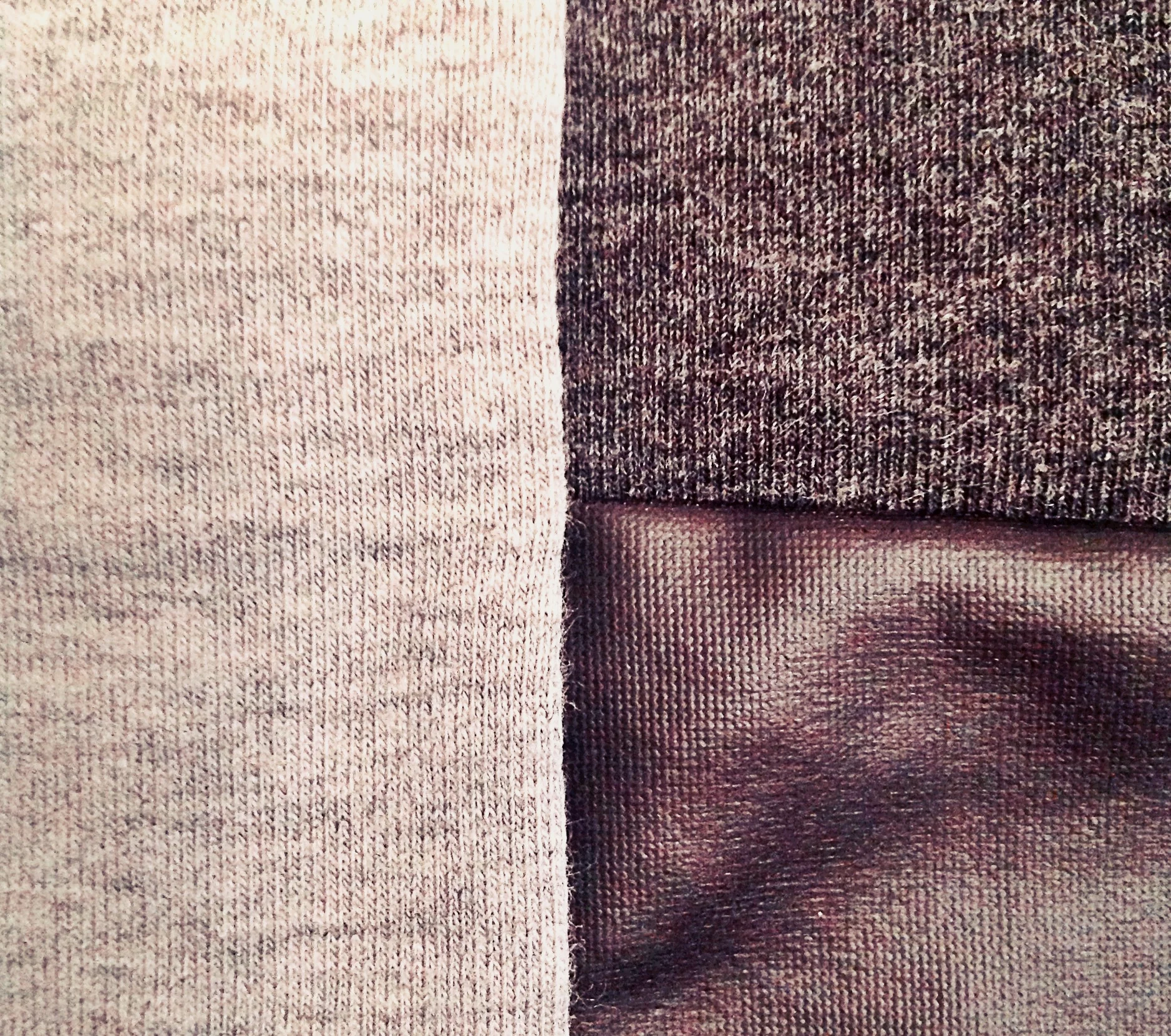Color Block

A little while ago, I bought some stretch vegan leather from Girl Charlee because I wanted to play with it. I ended up making a raglan shirt for which I used the vegan leather for the sleeves and neckband. I will post some photos soon.
I had enough left over to make a color-blocked tee shirt. I thought it best after experiencing long sleeves in vegan leather to make a short sleeved tee shirt. It is just a lot of vinyl going all the way down your arms, although the back is quite soft and it moves well.
I used my Lark Tee pattern from Grainline Studio, which I have used so much I will probably have to print out and glue the pattern together again from heavy use. With all the different necklines, it is very versatile and I can adjust sizing by the thickness of the fabric and desired fit. I know, you can do this with any pattern, but I know this one so well, I can nail it almost every time.
The first step was to take the front and back pattern pieces and trace them onto medical paper. This is an easy way to trace patterns and is nice and wide. For this, it is necessary to duplicate the pattern so that you see the whole front and back on the sheet. The thin medical paper makes it easy to fold on the line and trace the other side onto the paper for cutting.
I put the lines where I wanted the blocks to be. I always reference these from the bottom of the armhole, as this is the spot where all patterns match up. I chose to make the back the opposite so that the upper right of the front matched the upper back on the left. The process looked something like this (it is hand drawn and definitely NOT to scale of the original pattern).
I traced each drawn piece onto the paper as below, using the original center fold line as the direction of the grain line. Then I added the same seam allowance as the rest of the pattern to the lines I had drawn.
One of the tricks with the serger in this case is to keep it from making wavy, uneven lines. I almost never use the serger on the setting of 1, which I believe is intended to be even feed, and almost always have it set where it compresses the fabric a bit. It is always good to run it on a test strip of the fabric you are using. I am not so good at remembering to take this advice.
And above is me, trying to get used to taking pictures of myself, in the finished product, paired with my favorite pair of Ginger Jeans from Closet Case.







![IMG_1479[647].JPG](https://images.squarespace-cdn.com/content/v1/58f0d72b2994ca3c1de8df5a/1492898145179-1DQM7JE8Q70KDYOFZ9DD/IMG_1479%5B647%5D.JPG)
![IMG_1480[649].JPG](https://images.squarespace-cdn.com/content/v1/58f0d72b2994ca3c1de8df5a/1492898248859-GXWGV31YKS29RTQROEQK/IMG_1480%5B649%5D.JPG)
![IMG_1464[643].JPG](https://images.squarespace-cdn.com/content/v1/58f0d72b2994ca3c1de8df5a/1492883995135-W4UNMDR65XJDJRSPEIDS/IMG_1464%5B643%5D.JPG)
![IMG_1465[645].JPG](https://images.squarespace-cdn.com/content/v1/58f0d72b2994ca3c1de8df5a/1492884013121-MBUXYMJOHCP70APR38BG/IMG_1465%5B645%5D.JPG)